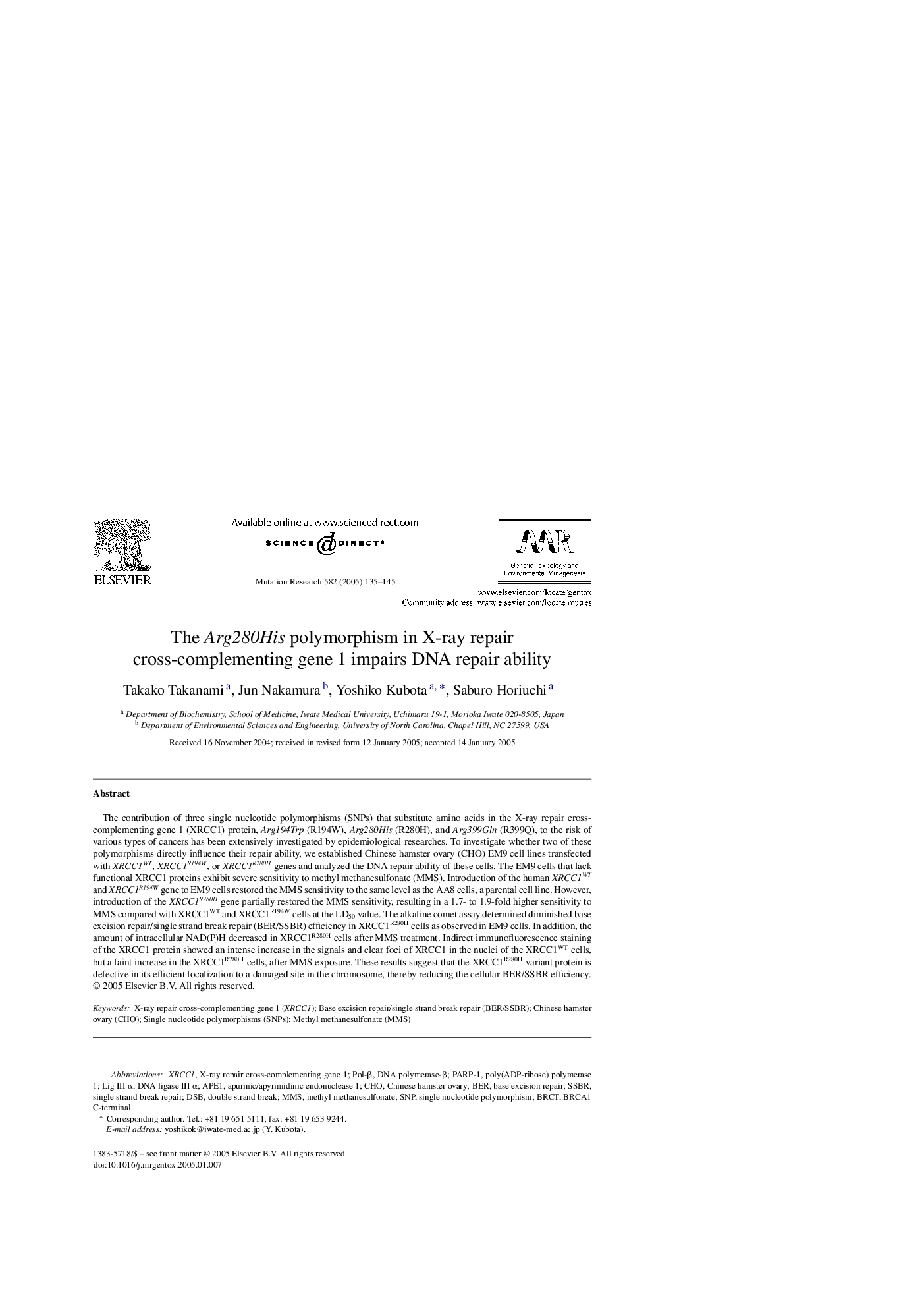| Article ID | Journal | Published Year | Pages | File Type |
|---|---|---|---|---|
| 9910139 | Mutation Research/Genetic Toxicology and Environmental Mutagenesis | 2005 | 11 Pages |
Abstract
The contribution of three single nucleotide polymorphisms (SNPs) that substitute amino acids in the X-ray repair cross-complementing gene 1 (XRCC1) protein, Arg194Trp (R194W), Arg280His (R280H), and Arg399Gln (R399Q), to the risk of various types of cancers has been extensively investigated by epidemiological researches. To investigate whether two of these polymorphisms directly influence their repair ability, we established Chinese hamster ovary (CHO) EM9 cell lines transfected with XRCC1WT, XRCC1R194W, or XRCC1R280H genes and analyzed the DNA repair ability of these cells. The EM9 cells that lack functional XRCC1 proteins exhibit severe sensitivity to methyl methanesulfonate (MMS). Introduction of the human XRCC1WT and XRCC1R194W gene to EM9 cells restored the MMS sensitivity to the same level as the AA8 cells, a parental cell line. However, introduction of the XRCC1R280H gene partially restored the MMS sensitivity, resulting in a 1.7- to 1.9-fold higher sensitivity to MMS compared with XRCC1WT and XRCC1R194W cells at the LD50 value. The alkaline comet assay determined diminished base excision repair/single strand break repair (BER/SSBR) efficiency in XRCC1R280H cells as observed in EM9 cells. In addition, the amount of intracellular NAD(P)H decreased in XRCC1R280H cells after MMS treatment. Indirect immunofluorescence staining of the XRCC1 protein showed an intense increase in the signals and clear foci of XRCC1 in the nuclei of the XRCC1WT cells, but a faint increase in the XRCC1R280H cells, after MMS exposure. These results suggest that the XRCC1R280H variant protein is defective in its efficient localization to a damaged site in the chromosome, thereby reducing the cellular BER/SSBR efficiency.
Keywords
DSBDNA polymerase-βBRCA1 C-terminalSSBRXRCC1APE1BRCTMMSBERPARP-1apurinic/apyrimidinic endonuclease 1ChoChinese Hamster OvaryChinese hamster ovary (CHO)Single strand break repairbase excision repairdouble strand breakmethyl methanesulfonatePoly(ADP-ribose) polymerase 1Single nucleotide polymorphisms (SNPs)Single nucleotide polymorphismSNP
Related Topics
Life Sciences
Biochemistry, Genetics and Molecular Biology
Cancer Research
Authors
Takako Takanami, Jun Nakamura, Yoshiko Kubota, Saburo Horiuchi,
